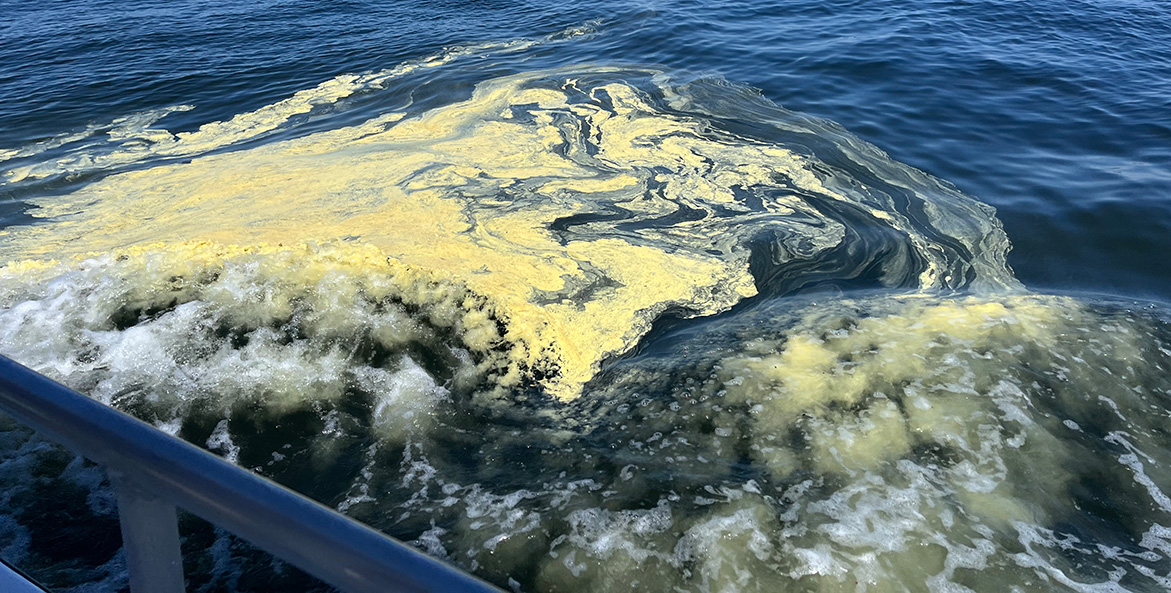Every April, pollen becomes an inescapable part of life in the Chesapeake region. Trees, following their age-old instinct to reproduce, release puffs of this fine yellow-green dust that covers cars, sidewalks, and pretty much anything else outside. Most of us suffer through days of runny noses and watery eyes.
How does all this pollen affect the health of rivers, streams, and the Chesapeake Bay?
On the surface, it doesn’t look good. Pushed by currents and wind, fallen pollen atop the water forms neon swirls and chartreuse clouds, while grains drift through the water below like tiny yellow snowflakes.
But pollen plays an important role in the natural rhythms of the Bay’s tributaries. For millions of years, pollen carried into waterways has become part of the food chain. After pollen grains enter the water, bacteria and fungi break down their tough cell walls, making the pollen food for zooplankton, aquatic insects, worms, larvae, and other macroinvertebrates.
These small aquatic organisms feed fish, shrimp, crabs, birds, and all the other animals that call the Chesapeake waterways home.
Pollen does contain small amounts of nitrogen and phosphorus. In excess, these nutrients contribute to harmful algal blooms that lead to dead zones in the Bay. But the nutrients from pollen are insignificant when compared to pollution that enters the Chesapeake from cities, suburbs, farms, and other sources.
Trees do their best to hold on to nutrients rather than releasing large amounts in pollen. Instead, we can look at pollen as a relatively minor natural source of nutrients.
What does pollen tell us about the past?
What’s more, because pollen grains persist in sediment fossils over millennia, scientists called paleoecologists study pollen to reconstruct the past. These ancient pollen grains can tell us a lot about the vegetation and climate of our region in previous eras.
Much of what we know about the landscape changes in the Bay watershed after European colonization (but before aerial photos and satellite imagery) comes from soil and sediment cores analyzed for pollen content. For example, ragweed pollen, notorious to allergy sufferers, only appeared in sediments after much of the watershed’s forests were cleared for agriculture. That same period also corresponds with the first evidence of a low-oxygen dead zone.
How does climate change affect pollen?
Unfortunately for anyone with allergies, given the intensifying effects of climate change, in the future our region will likely experience earlier, and longer, allergy seasons and higher pollen counts.
When it comes to pollen and the Bay, we can think of it as another reminder that everything that happens on land is inextricably connected to life in our waterways. This spring, if you see pollen on the water, don’t fret for the Bay just yet. Just grab a tissue and take a minute to reflect on this time-honored cycle.




